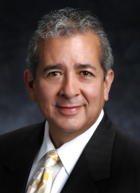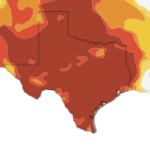The Secrets Behind San Antonio’s Water Conservation Success

Photo courtesy of SAWS
SAWS President and CEO Robert Puente says San Antonio could be a model for water conservation the rest of the state.
San Antonio is something of a poster-child for smarter water use in Texas. The city has reduced its per-capita water usage by 42 percent over the last few decades, despite one of the fastest-growing populations in the country. At the 2012 Texas Water Summit at the University of Texas at Austin’s Academy of Medicine, Engineering and Science Monday, Robert Puente, the President and CEO of the San Antonio Water System offered some insight to San Antonio’s success and how the city weathered the drought.
Water conservation was the foundation for the city’s efforts, Puente says. The San Antonio Water System (SAWS) now serves over 1.6 million people, but despite a sixty-seven percent increase in population, the city has witnessed little to no increase in water use. How? Puente largely credits this feat to an arsenal of conservation programs. San Antonio has relied on what Puente calls “the three-legged stool”: education and outreach, reasonable regulation through effective city ordinances, and healthy financial investment towards conservation efforts.
“Our business model is to convince our customers to buy less of our product,” says Puente. Like the Plumbers to People program, an initiative to retrofit toilets. The cumulative effect of these conservation efforts was the conservation of more than 120,000 acre-feet of water – an $84 million savings over the course of last summer.
The efforts of the San Antonio Water System, however, haven’t stopped at improving the efficiency of bathrooms.
While conservation has certainly provided the basis for San Antonio’s water success, it isn’t the only factor. The city now meets approximately sixteen percent of its total water demand using recycled water. Big companies in the area, like Toyota and Microsoft, are now some of the largest consumers of these recycled water products.
In addition to water recycling, San Antonio has also started something called biosolid composting, a gas-to-energy process where digester gas from factories is sent back into the market as a source of energy for thirty billion gallons worth of water storage services, and brackish water desalination. Puente says that this diversification of water resources has served the community of San Antonio well and may just provide a model of action for the rest of Texas.


